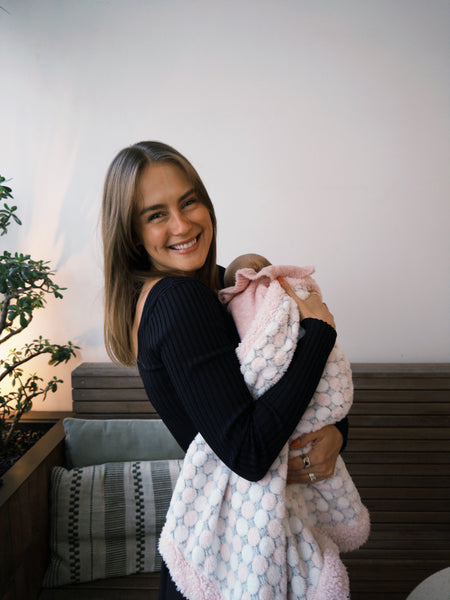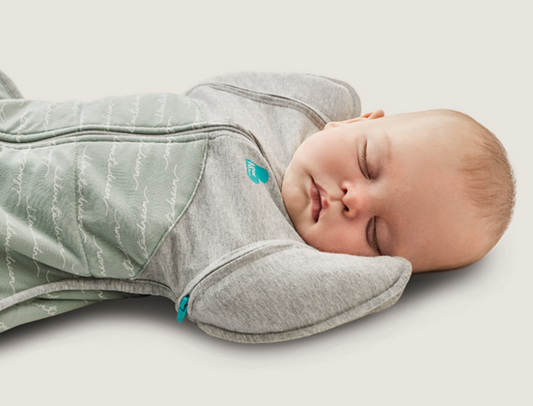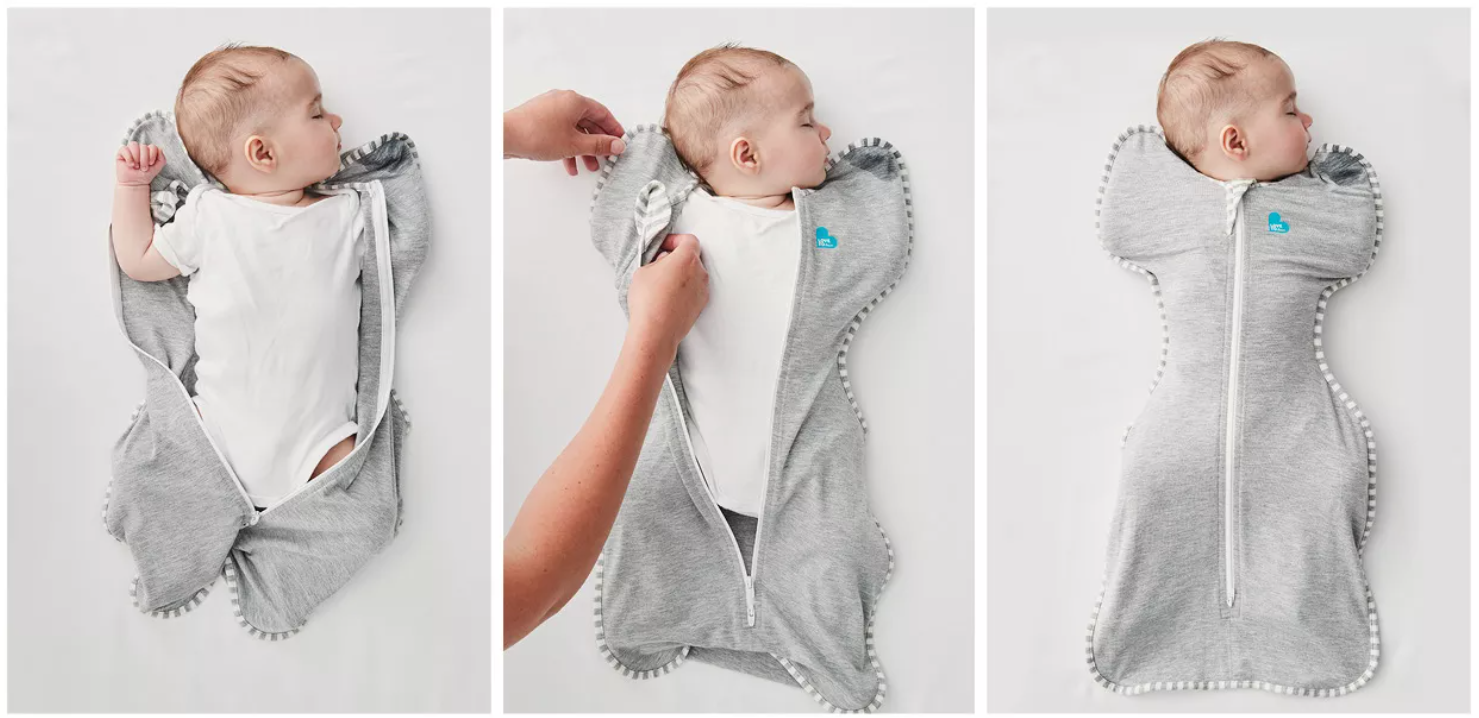What is swaddling?
Swaddling, also known as wrapping, is a strategy parents and caregivers use to help their newborn baby to settle and sleep on their back during the first few months. Swaddling imitates the warmth and comfort experienced in utero and makes the post-birth transition smoother.
Why should you swaddle your baby?
Why do you swaddle a baby? Swaddling is a technique used by parents and caregivers to help their little one settle and sleep.
It’s a great way to prevent your child from waking up due to the startle reflex. The startle reflex causes a child’s arms and head to jerk which can cause them to wake them up. Swaddling calms this sudden movement and helps them to settle faster.
Below, find other common reasons why parents and caregivers choose to swaddle:
- Swaddling helps your baby to sleep in a familiar, warm, and comforting environment.
- Swaddling helps your baby to stay calmer for longer periods of time.
- Swaddling prevents your baby from scratching their face.
- Swaddling helps to lay the foundations of a safe sleep routine. Your baby will slowly begin to recognise swaddling as a cue to sleep.
When should you start swaddling your baby?
It’s up to the parent or caregiver to decide when to swaddle. If swaddling is something you’d like to try, it’s recommended that you start from birth in order to establish a safe sleep routine that will last for years to come. Your little one will slowly recognise swaddling as a cue to sleep.
You must stop swaddling once your baby starts to show signs of rolling over or pulling up onto their hands. Every child is different, but this usually happens between three to four months old.

How to traditionally swaddle a baby: A step-by-step guide
- Step one: Lay the blanket out on a flat surface such as a changing table and fold over one of the corners.
- Step two: Lay your baby face-up on the blanket with the head positioned at the folded corner.
- Step three: Bring the bottom corner of the blanket up over their feet.
- Step four: Wrap the left corner over your baby, with their left arm by their side, leaving the head and neck outside of the blanket.
- Step five: Make sure the blanket isn’t too tight around the hips and legs and ensure that their body can still move around.



















